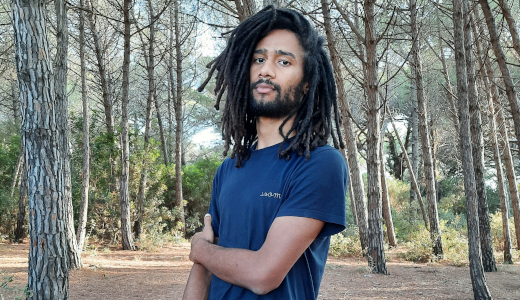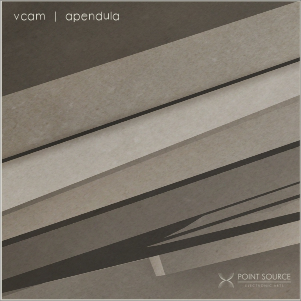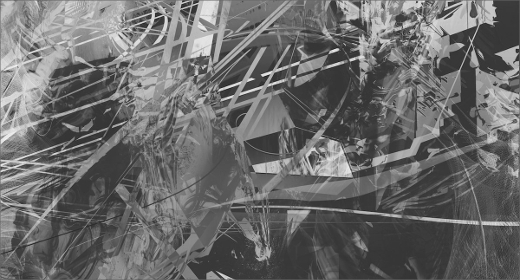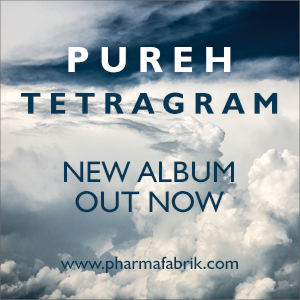Review and interview — Generative by nature, there is still a meticulous attention to detail that Herva has by design, sought after through their recording sessions using custom built hardware and exploration and discovery inside coding environments.
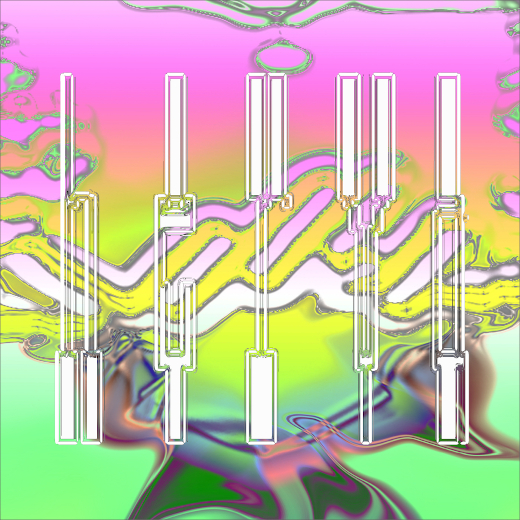
Wild with a temperament of quiet confidence
Returning to Planet Mu with Seez, Herva, who is Herve Corti to his parents, has previously released two albums with the label. Familiar with experimentation and unusual practices, this new material sees Herva take unflinching maneuvers into uncharted territory. As ever with their presence, there are elements of control and moments where the spontaneity goes wild with a temperament of quiet confidence. Generative by nature, there is still a meticulous attention to detail that Herva has by design, sought after through their recording sessions using custom built hardware and exploration and discovery inside coding environments.
Opening track “Xld,” throws us straight into the deep end and why not—unconventional from the offset it may take some time to settle into this release. However, once you find your own space and time it benefits from continued listening. These forays break off into mini ecosystems that gestures toward evolving conclusions; you will catch something new every time.
By this point you are probably expecting an open-ended experimental recording session, although Seez continues to capture interest with choice motifs hinting towards melodic leads, IDM electronics and even some broken beat functions. Check out highlight tracks: “Ruh,” “Obeye,” and “Etop,” for those moments that have a little extra spice!
It has been 5-years since we last heard from Herva (Hyper Flux, Planet Mu 2017). Whilst we can only speculate behind the reasons why artists take a hiatus, Herva is pretty upfront with Igloo Magazine—they have been busy! Going into more depth and discussion we were lucky to ask the Italian experimental electronic artist some questions in which they answered kindly. In our interview, Herva talks about precious time, family, their company Audio Gear Obsession, and how it led into their workings on Seez.
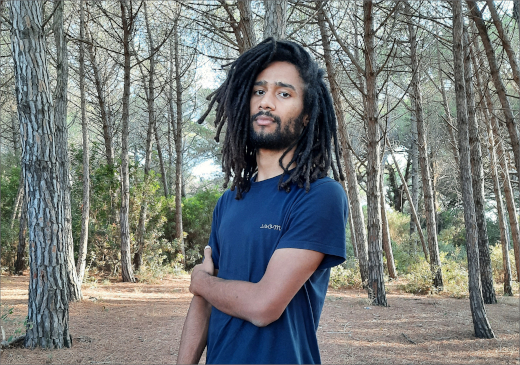
Igloo :: Hello Herva. First off, thank you for joining Igloo Magazine for an interview and congratulations on the new album!
Herva :: Thank for hosting me! :)
To jump straight into it, we haven’t musically heard from you for 5-years, what have you been up to?
Well, I mainly worked to set up a way to live without being dependent on gigs and the music market. For me living from gig to gig as an underground artist is very stressful. To keep everything going you have to deal with a lot of things that turn it into a job. You always have to be in sight no matter what, and you cannot have the privilege to just stay quiet when you don’t have anything to say. I want to be able to take my time, and to take pauses from music to refill my creativity and my passion.
I often spend long periods of time without making music, sometimes even months. I need this kind of resets from time to time since they allow me to get back at it fresh. During these years I developed my engineering skills, I self-thought quantum physics and quantum computation, and I eventually ended up doing a Ph.D in these fields. At the moment I’m working as a researcher at the University of Pisa (Italy) and INFN (Italian Institute of Nuclear Physics). I also built a lot of audio hardware that eventually turned in Audio Gear Obsession, a company that builds hi-quality Eurorack modules. Last but most important, I had two kids. They are the most beautiful thing that happened during this gap, I love them. Basically, this is what I’ve been up.
Wow, a Ph.D, new business venture and new family, alongside releasing a new album! You must be a master of time to balance all of these things. Now that you have mentioned it, it feels to me that each of these have their own influences within Seez—the research (theory), coding (technical), and the playfulness coming from your own experiences now as a father, perhaps?
Yes, all these new adventures influenced Seez deeply. I’m a researcher at the bottom. That’s the direction my instinct pushes me. I can’t stay too much comfortable and still; I always need to embark on something new. Being a father, I rediscovered the playfulness and the spontaneity of kids. It may sound cliché, but it is something that we tend to forget in our frenetic life. It’s important to go into “kid mode” from time to time. They are capable to express themselves freely and enjoy the moment without being caught up by the noise that surround us.. they taught me a lot.
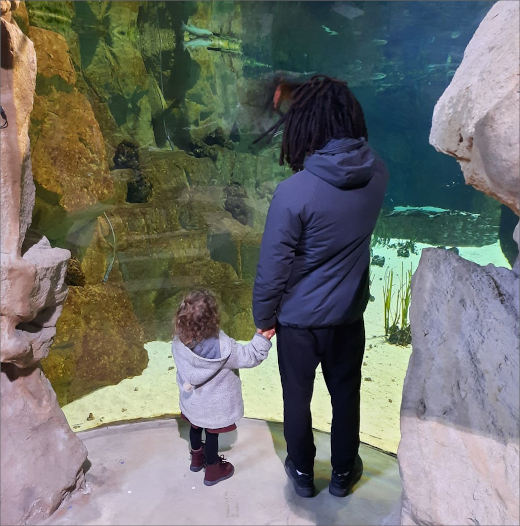
Our understanding is that your hardware company Audio Gear Obsession comes from the birth of trying to raise the bar on your latest release Seez. It sounds like you ended up going much further than that?
I like to take new paths and explore new things, you never know where you’ll end up. Audio Gear Obsession has been one of those cases. I’m not alone in AGO, the company is managed by one of my best friends Giacomo Pratesi. He fueled the idea to turn my experiments into a real company. He manages sales, communication and accounting. I design the modules and take care of their production. I actually made AGO very first modules soldering literally every component by hand, It was a hell of work. I put my soul into AGO modules, and knowing that other musicians are rocking them makes me proud.
Is there plans to expand AGO, or do you intend to keep it more of an intimate affair with Giacomo? What modules are currently in the pipeline?
Well, we don’t set limits; we work to grow AGO as much as possible. At the moment we are developing a few new (sick) modules, I really would like to say more, but it’s a bit early now.
You describe Seez as the alpha version of what you and your system are capable of; many producers and fellow modular equipment creators I speak to often describe hardware as a rabbit hole. Is this true for you? Did you find it difficult to take a step away back towards the production side of music when you were putting tracks together?
I totally can understand the modular creators you spoke with. The tracks that made Seez are my favorites of the almost infinite possible versions generated my software. In order to give to Mike (Paradinas) the version I liked the most, I literally listened to hundreds of different iterations of each track. This process took months, at a certain point I had to force my self to stop listening to new iterations since that process was sucking the life out of me. I was also used to listened for hours to the endless streams generated by my software, and coming back to the timings imposed by LP format has being quite hard. Modular heads know what I’m talking about. Beside that, I truly enjoy my new production method, and I’m digging further into it.
A lot of Igloo Magazine readers are artists and producers also, can you share with us any specifics about your system and setup, please? Where did you start building and where do you see yourself progressing with your hardware?
Sure it’s a pleasure to share it!
As first step I decided to use free and open source software only. I wanted to be freed from the obligation to change hardware and/or operating system to keep the music going. There are a lot of free and open source products that have as much quality as the non-free counterparts. Linux based operating systems are perfects to install and run them, so I assembled a server powered by Gentoo with a Linux kernel dedicated to real-time applications. Gentoo is an hardcore Linux distribution that allows the user to compile everything from source code. It is one of the most configurable distros, and it allowed me to set up a machine tailored to run Csound programs.
I wanted to be freed from the obligation to change hardware and/or operating system to keep the music going…
Csound is the language I used to create Seez. It is a text based domain specific programming language that is used for audio applications. My Csound software are resource very intensive, lots of them have thousand and thousand of line of codes. To run them at a sufficiently high resolution I need a powerful server with a fast CPU. At the moment audio languages are usually bad at running things in parallel, so having a lot of cores isn’t helping much, but a fast CPU makes the difference.
I used Vim, Sublime Text and lately VSCodium as my main text editors. These text editors have plugins and extension that highlight the Csound syntax, and help working with it. I hope that more people start to use Csound. It may be a little intimidating at first since it is a text based language, but it is very very fast and powerful.
The audio hardware I used to produce Seez was quite minimal compared to my Hyper Flux. I have a Motu 24ao as DAC to route the output of my software into my handmade point-to-point summing mixer (the daddy of Audio Gear Obsession SUMMINGFACILITY). Then I route the mixer stereo output into a modded GSSL compressor to glue it. Finally, I convert the compressor output to digital using a Mytek Stereo96 ADC.
The tracks are recorded using Ardour, and they haven’t been edited, nor effected. I forced my self to make everything using Csound, and that led to a lot of unexpected but lovely outcomes.
I plan to shrink my studio further replacing my rack 19” rig with AGO summing mixer (SUMMINGFACILITY) and compressor (DYNAIMCENGINE) to make it more compact and portable. However, our module run has always gone sold out; we haven’t been able to take units out yet.
Comparing to your previous releases, such as Hyper Flux, you have transcended through an array of genres, yet maintained your own signature sound throughout. How do you manage this with generative works especially, have you kept similar mixing techniques or are you adding anything later in the tracks that keeps it distinctively Herva?
Probably, I have been able to retain my signature simply because I know what I like to hear from myself. I make music for me, and in order to get excited I have to make something that I truly enjoy. I follow my instinct, and when I feel that a track is ready I can see it clearly in my head. If I don’t see the track with its a distinctive shape and color, I just have to work more on it.
It is interesting to know about your human touch on the tracks—as whilst these are generative, ultimately you are making the final decision on what you like—especially with infinite iterations; sounds like a lot of audio to manage! Were there some golden nuggets that got lost in the huge pile / are you holding on to any for future releases, or is your plan to move forwards?
Definitely an humongous amount of audio to manage! I have other tracks in the vault, but aren’t quite ready at the moment. They need to be developed more for Seez follow ups. For my next album I’m evolving the production method that generated Seez. As I said, you can think of it as the an alpha version, now I’m developing the beta version.
Can we expect to see any live dates from Herva and if so, where and when?
I had an A/V show in Florence (Italy), Jonathan Tegelaars curated the visual parts. Jonathan is on my best friend and a very talented artist. He made the artworks of almost all my releases including Seez. The visuals were perfect with my music, and we truly had a lot of fun playing that show. However, I haven’t defined anything yet. Honestly, I haven’t looked much to find new gigs. Having a day job and a family, at the moment I have other priorities. Since I have a lot less free time than my twenties I give it a lot of value, and I avoid wasting it. I decided to reject random gigs, and to focus on events that I really like to attend. I know it may sound a bit cocky, but one of the most important things I understood in this 5-years gap is that time really is one of the most precious thing we have. Now that I have a lot of things going on, I have to carefully select what to do and what not to do.
For the rest of the modular readers, keep your eyes peeled for updates on modules at audiogearobsession.com.
Seez is available on Planet Mu. [Bandcamp | Release page]






